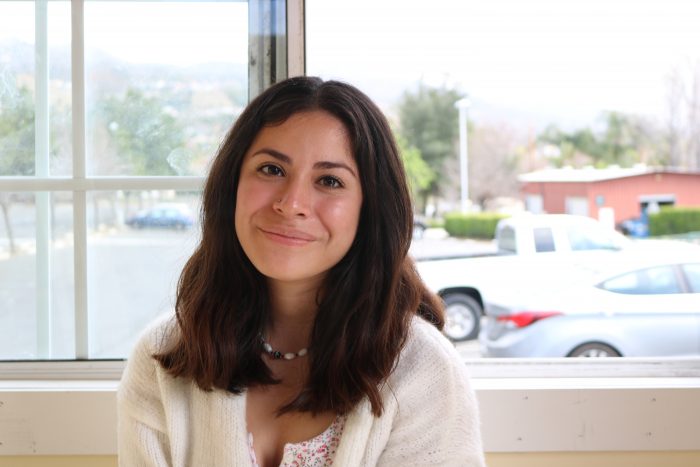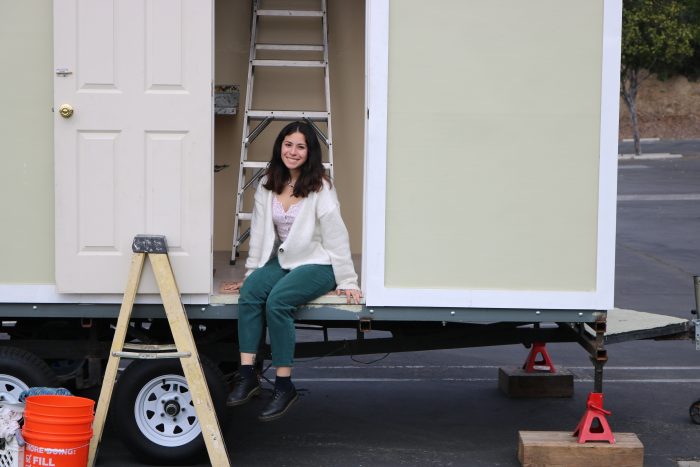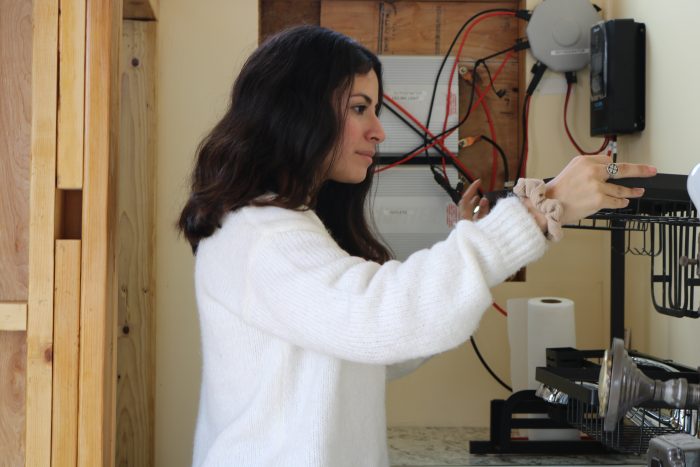Inspired by Sustainability: ‘Tiny House’ Advocate Walks – and Lives – the Talk
 A senior thesis is typically a labor of love, but it’s rarely something a student can come home to. Unless you are interdisciplinary studies student, Jacky Tejada.
A senior thesis is typically a labor of love, but it’s rarely something a student can come home to. Unless you are interdisciplinary studies student, Jacky Tejada.
Animated by a commitment to sustainability, and fostered by her urban studies courses and a passion for architecture, Jacky’s project – to build a tiny house, literally with her bare hands (and help from friends and family) – served as her way of addressing some seemingly intractable issues, in microcosm, with the added practical benefit of providing shelter (for herself) and potentially actionable lessons (for the larger community).
Constructed of repurposed materials, the house is equipped with a compostable toilet, water filtration systems, rain barrel, kitchen and shower and a loft for the bed. It currently sits on the Woodbury campus, awaiting her next steps (moving in, making it habitable, and inviting the community to tour and vet the structure).
Because Jacky’s petite domicile is both a place to live and an academic undertaking, the tiny house isn’t simply a place to crash. “I’ll need to document life within the tiny house in order for me to present its benefits and hardships,” she says. “My project is rooted in how to develop a symbiotic relationship between architecture and urban studies, to address the issue of housing.”

Acknowledging that tackling the problem of housing insecurity on a macro scale was out of the question, she opted for something more manageable, drilling down to the shortage of student housing. “I decided that Woodbury would function as my somewhat controlled environment to study and design a response to housing insecurity among students across the country,” she explains. “The homelessness crisis has been an issue I’ve been interested in for quite some time. It only made sense that my thesis project would address the issue of housing insecurity.”
“I believe all designed solutions should also work to address environmental sustainability, hence my proposal for an off-grid tiny house as on-campus alternative housing,” she says. “Housing should work with a range of elements — the most important thing when designing housing or any infrastructure is the inevitable need for change.”
While Jacky explains that her project was designed with students in mind, “the tiny house itself could work for anyone. More people should consider the benefits of downsizing and living only with what is absolutely necessary.” And the cost for the tiny house? Around $7,000. “On some things, we saved a lot,” she says, “and on other things, we splurged.”

Jacky believes that majoring in interdisciplinary studies has prepared her to take on the ‘Tiny House’ Project. “This is definitely a multi-disciplinary project. I’ve been required to work across multiple disciplines, beyond just architecture and urban studies, she says. “I’ve also incorporated psychology, communications and anthropology. I love my major because I feel capable of working in any discipline and can easily reorient myself in other environments.”
Jacky describes adjusting to living in the tiny house as “a journey.” As she says, “obviously there’s not a lot of space for storage, and I’m a person who has so much. The hardest part for me has been figuring out what clothes to bring and what to leave behind. But besides that, it’s been exciting to focus on the essentials. It forces you to stay organized, work with what you have, and let go of excess.”